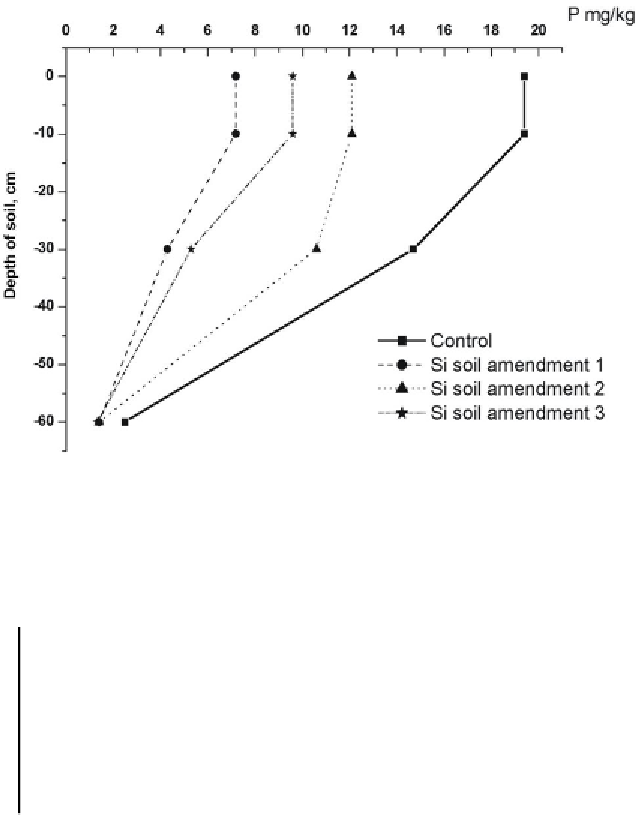Agriculture Reference
In-Depth Information
Figure 5. Leacheable (water-extractable) P in sandy soil treated or untreated with Si soil amendments.
Table 3. Influence of Si-rich materials on some soil water-physical properties
(Matichenkov et al., 1994)
Ground
Sand
Clay-sand
Sand-clay
Clay
Variant
W%
W%
W%
W%
Control
15.7
27.3
42.0
87.2
Amorphous silica
20.3
29.9
44.8
76.9
Si soil amendment 1
26.7
35.2
42.3
67.2
Si soil amendment 2
31.5
48.7
77.4
84.3
LSD*
1.3
1.5
2.1
1.8
* Least significant difference at 0.05 level.
An alleviative effect of Si on Al toxicity in acid soils has been reported in many crops
(Haak and Siman, 1992; Myhr and Erstad, 1996). It is possible to postulate five different
mechanisms of the Al toxicity reduction by Si-rich compounds. Firstly, monosilicic acid can
increase soil pH (Lindsay, 1979). Secondly, monosilicic acid can be adsorbed on aluminium
hydroxides impairing their mobility (Panov et al., 1982). Thirdly, monosilicic acid can form
slightly soluble substances with ions of Al (Horigushi, 1988; Lindsay, 1979). Another
mechanism for the aluminium toxicity reduction by silicon-rich compounds can be strong
adsorption of mobile aluminium on silica surface (Schulthess and Tokunaga, 1996). Fifthly,
mobile silicon compounds can increase plant tolerance to Al (Rahman et al., 1998). All of
these mechanisms may to work simultaneously, with one prevailing over others depending on
soil conditions.
During last century, industry and agriculture have seriously disturbed the natural cycles
of heavy metals in the soil-plant system (Adriano, 1986; Benavides et al., 2005). Current and















Search WWH ::

Custom Search